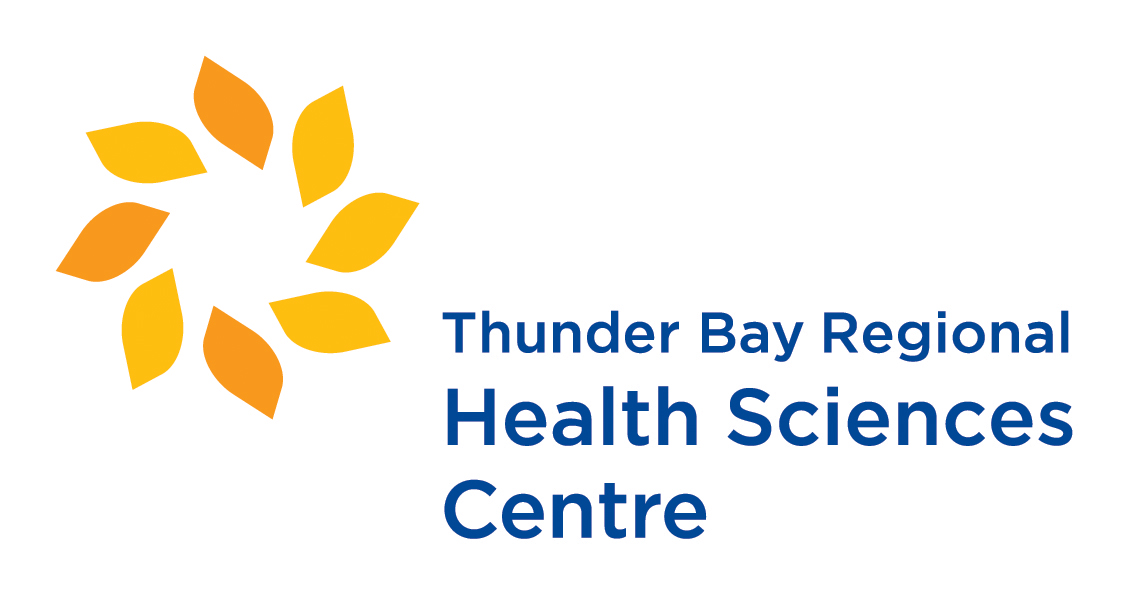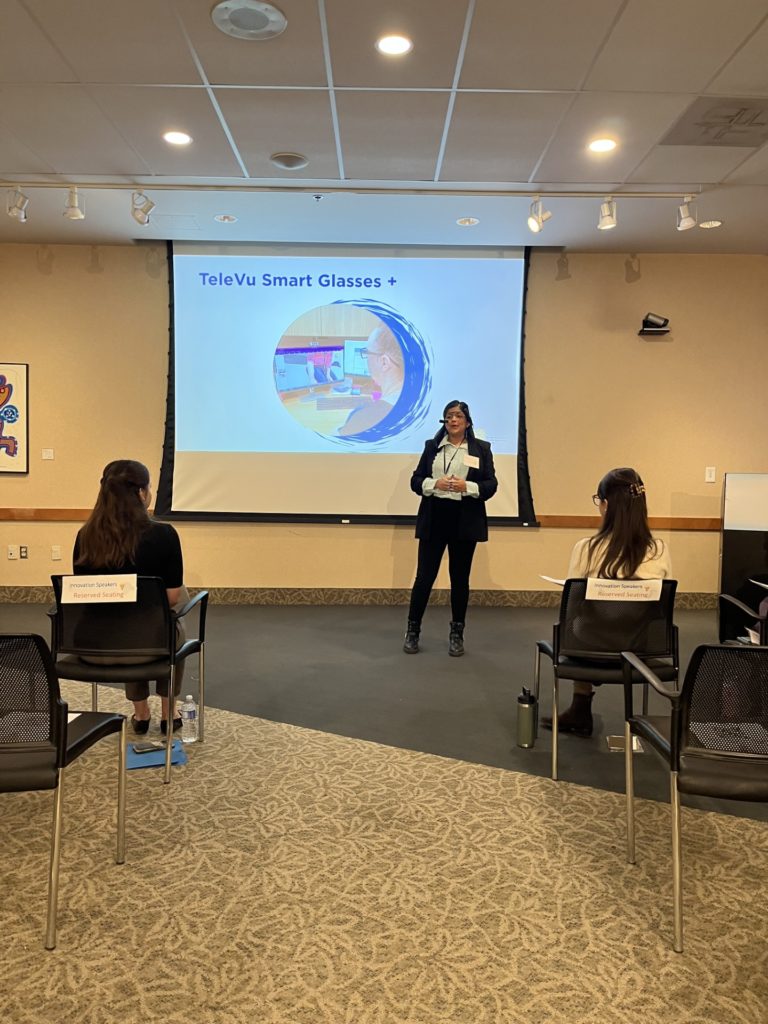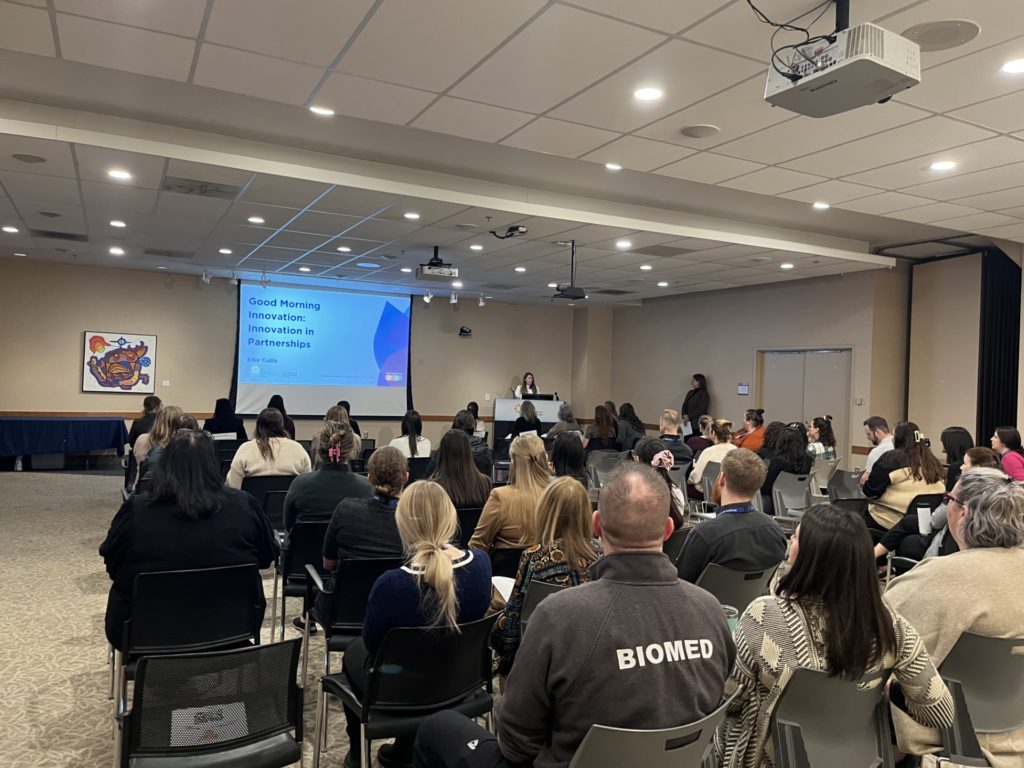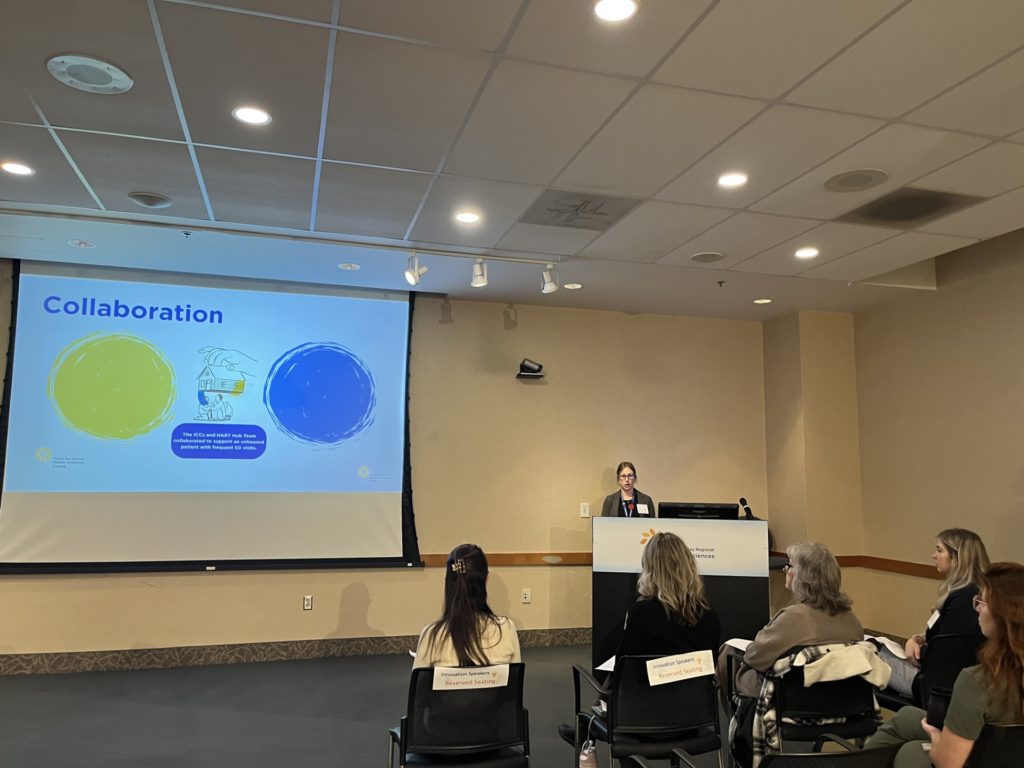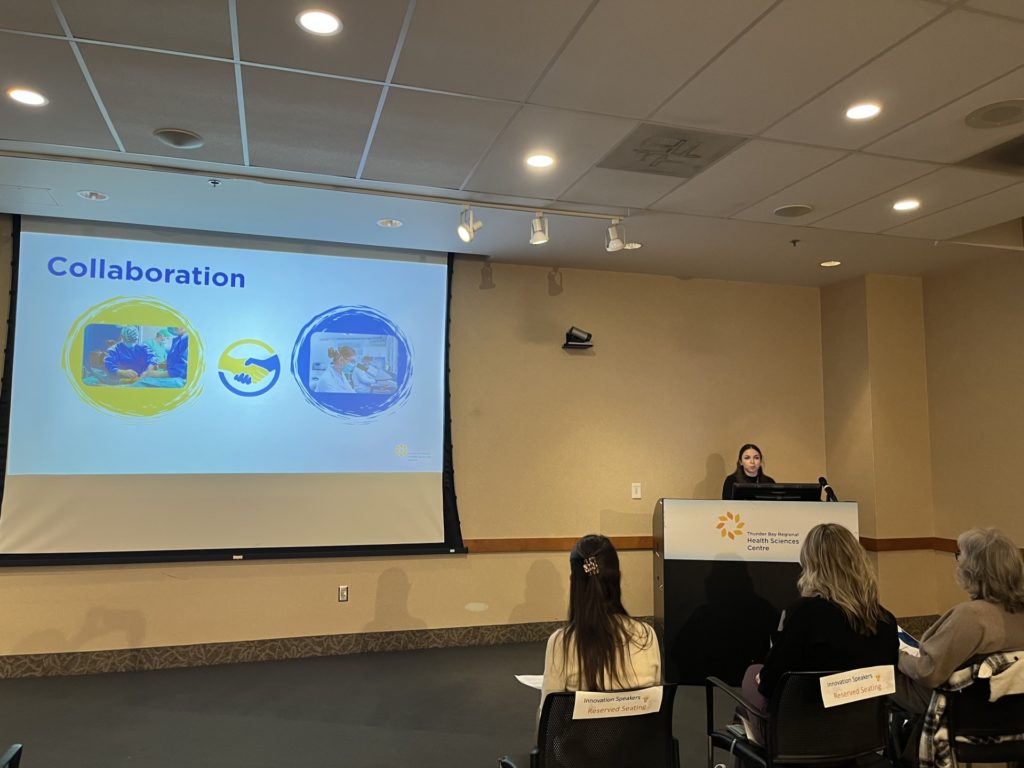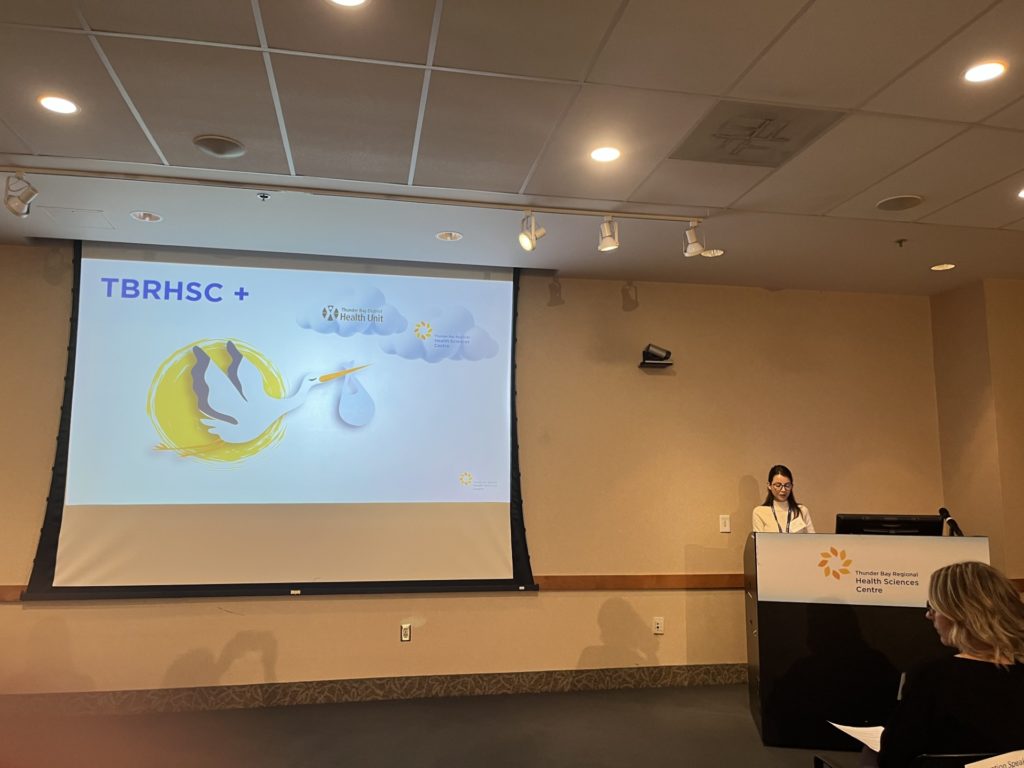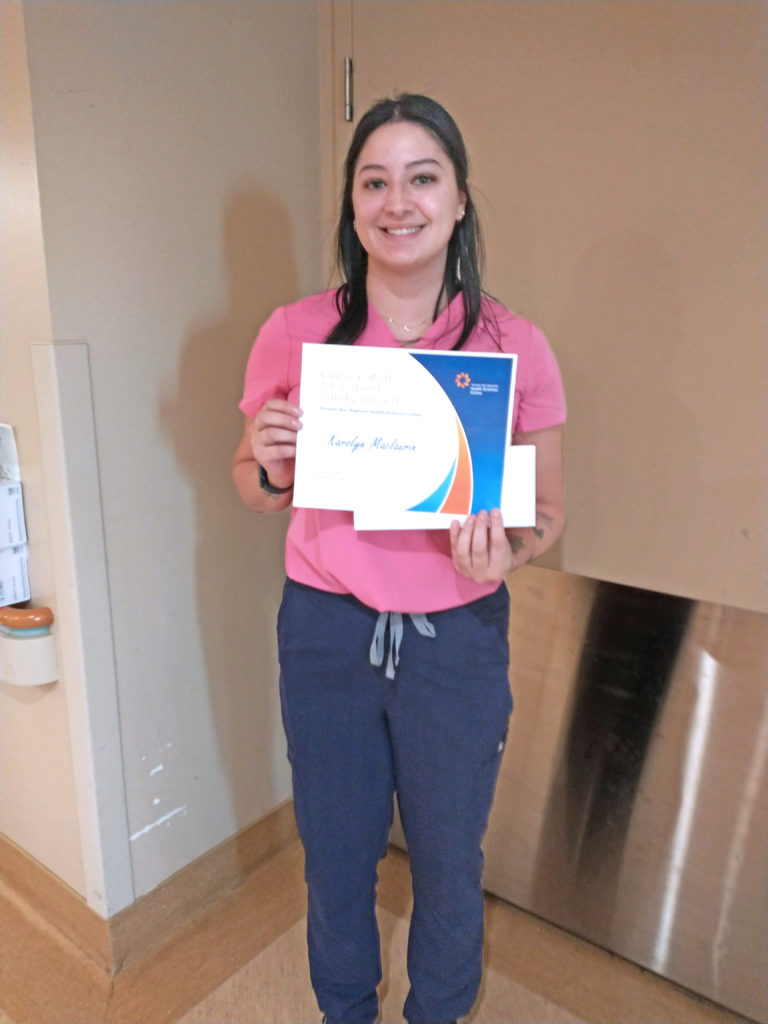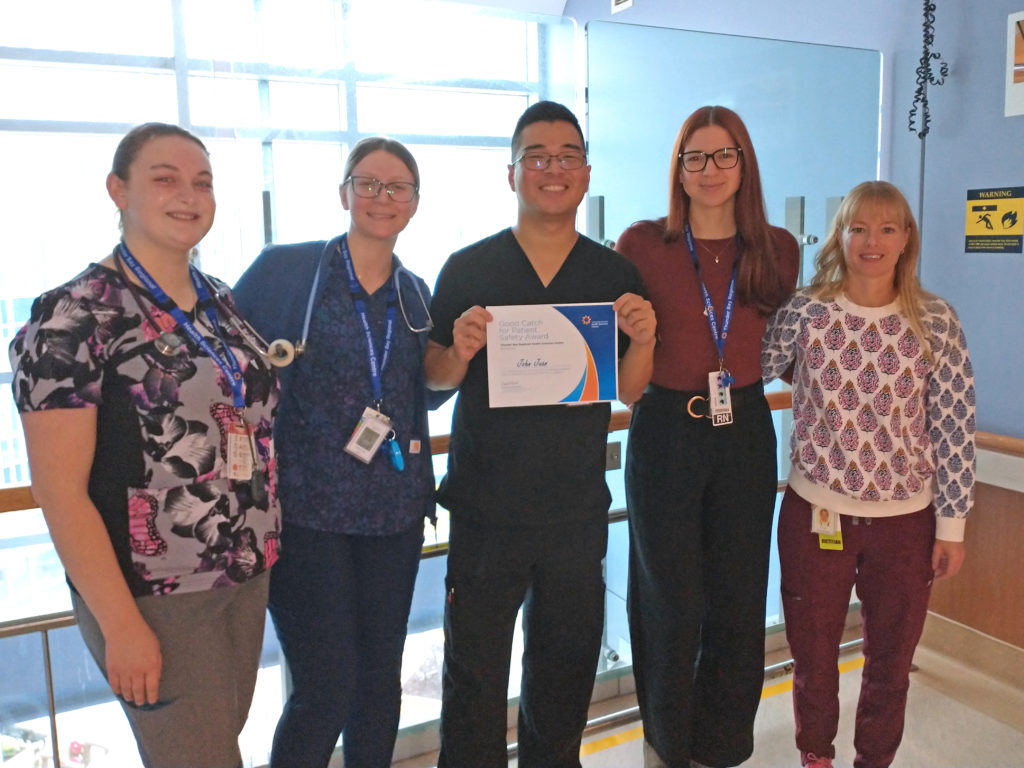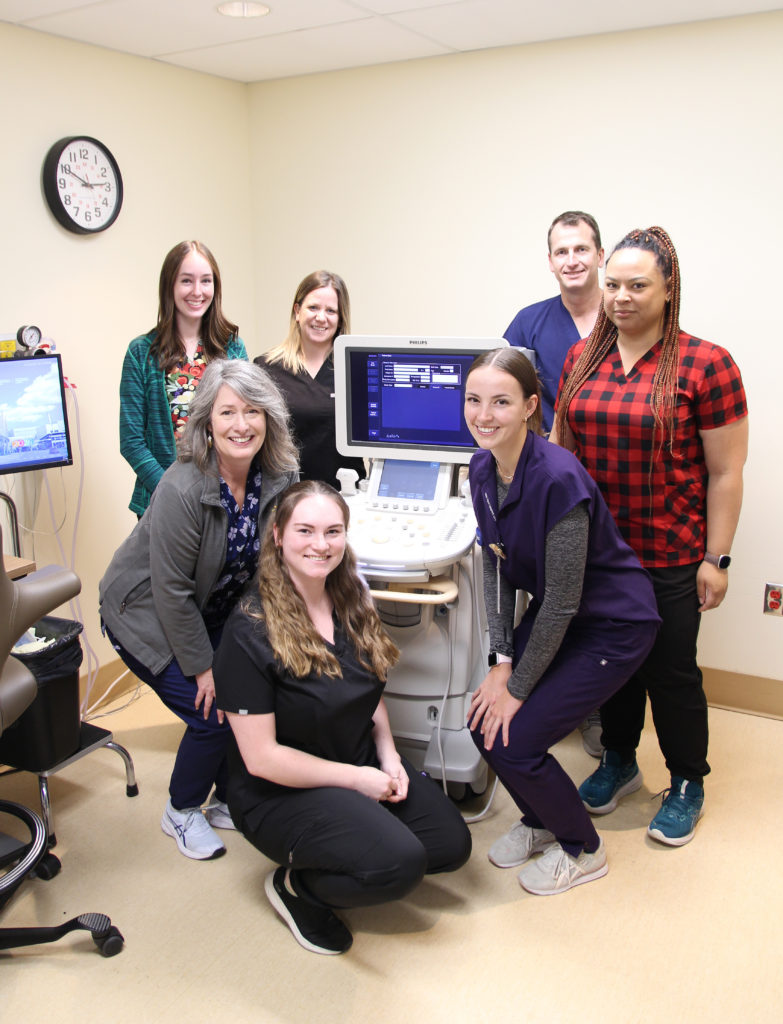The latest Good Morning Innovation event brought together staff from Thunder Bay Regional Health Sciences Centre and Thunder Bay Regional Health Research Institute to explore how strategic partnerships drive progress, improve equity, and strengthen patient outcomes. Hosted by Innovation Team member Elke Cullis, the session focused on “Innovation in Partnerships,” emphasizing creative collaboration across sectors and specialties.
Jessica Logozzo, Vice President, Strategy and Regional Transformation, opened the event with insightful remarks on the power of partnerships in health care. Working to facilitate system-wide collaboration across Northwestern Ontario, Logozzo highlighted how cross-sectoral thinking and shared efforts lead to smoother transitions in care, stronger communication networks, and improve efficiency. Her message underlined how internal and regional partnerships can lead to meaningful, sustainable outcomes for patients and families.
During the session, participants took part in a Dot Voting activity to determine the most important priority for building effective partnerships. Each attendee received three dots to allocate to the guiding principles they valued most. The final results revealed a strong collective focus on equity, collaboration, and communication. The top priority was building partnerships that improve equity and access to care, which received 47 dots. Sharing resources, expertise, and data to achieve better patient outcomes followed closely with 45 dots. Strengthening communication and trust between teams and partners earned 36 dots, while involving patients, families, and communities as equal partners in care received 27 dots.
The event featured six innovation collaboration presentations that demonstrated how teamwork across programs and institutions leads to tangible improvements in care:
ICC & HART Hub – Paula Vangel (Manager, Indigenous Collaboration) highlighted collaboration between Indigenous Care Coordinators and the Homeless & Addiction Recovery Treatment Hub.
RAVE, SJCG & TeleVu – Marissa Fazzari (Coordinator, Cardiovascular Services) and Prachi Sharma (Change Management Lead at SJCG) presented how the Rapid Access Vascular Examination Clinic and Regional Wound Care Program integrate services through digital collaboration.
Establishing an Orthopedic Research Platform – Viktoriya Dyukaryeva (Orthopaedic Research Development Officer) showcased the partnership between Northwestern Ontario orthopedic surgeons and the Thunder Bay Regional Health Research Institute.
Prenatal Class Program Pilot – Vanessa Mihaljevic (Clinical Nurse Specialist) discussed the partnership between TBRHSC and the Thunder Bay Health Unit enhancing prenatal education.
Connecting Programs & Strengthening Care – Ramsey Broennle (Regional CKD Lead) and Susan Bale (Regional Indigenous Cancer Lead Assistant) shared how linking Indigenous Chronic Kidney Disease and Indigenous Cancer Screening programs promotes holistic care.
TBRHSC CVS & UHN PMCC – Amanda Kates (Performance Improvement Consultant) and Kaitlyn Veneruz (Clinical Nurse Specialist – Cardiovascular Surgery) detailed the collaboration between TBRHSC and UHN’s Peter Munk Cardiac Centre to advance cardiac care across regions.
The event closed with reflections on the success of current initiatives and a collective look toward sustaining innovation through continued partnerships. Attendees were invited to provide feedback and share suggestions for future sessions.
Stay tuned for the next Innovation event, coming 2026, promising another opportunity to celebrate innovation and creativity in health care.
